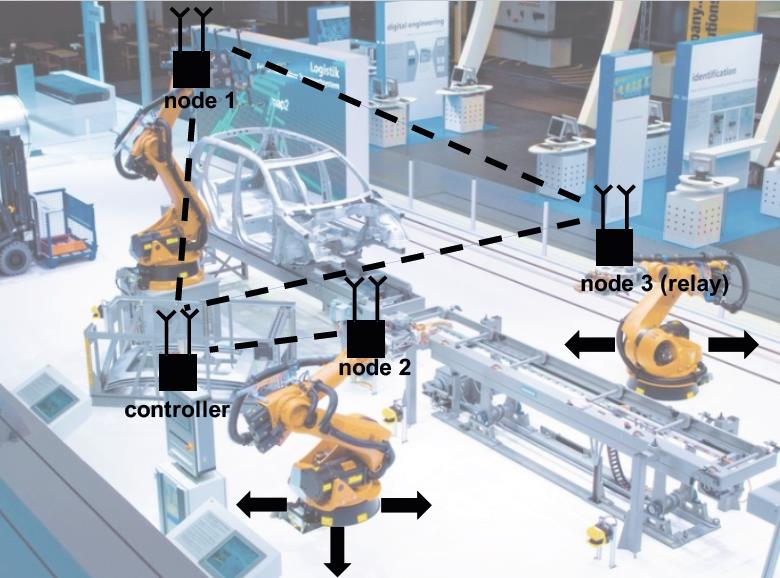Reliable and low-latency wireless communication links enable the replacement of cabled connections to facilitate highly reconfigurable production environments. The UNWIRE project investigated radio wave propagation properties between multiple mobile sensor and actuator nodes which are indispensable for fast control loops, e.g., for the highly accurate positioning of rapidly moving and cooperating production robots in tomorrow’s typical Industry 4.0 assembly lines.
To achieve a packet error rate comparable with cabled solutions, 2 innovative wireless principles were combined in a hardware-in-the-loop test setup: optimized wireless signal processing algorithms (in the transmitter and the receiver) and the dynamic selection of wireless relays with multiple antennas (network diversity).
The aim of realizing an industrial communication link with a cycle time of 125 μs and packet error rates around and below the targeted 1.4∙10-9 in production-hall-type MIMO fading was accomplished using channels in a 6-node scenario.
Simultaneous measurement data of radio wave propagation characteristics between sensor and actuator nodes (with two antennas) in harsh industrial environments were used to design a non-stationary, numeric geometry-based channel model for the real-time emulation of the wireless communication channel which takes the actual propagation environment into account. The real-time emulation of radio channels enables repeatable performance tests with a freely programmable radio platform.
This concept allowed the most effective signal processing algorithms and diverse mechanisms for the robust operation of wireless communication systems in real industrial scenarios to be examined and validated.
Start: 04.04.2019
End: 31.12.2020
Goals:
The performance of the previously established radio communication link was improved significantly, leading to packet error rates around and below the targeted 1.4∙10-9 in production-hall-type MIMO fading channels. Measurement data of radio wave propagation characteristics between sensor and actuator nodes (with two antennas) in harsh industrial environments. The measurement data is used to design a non-stationary numeric geometry-based channel model for the real-time emulation of the wireless communication channel, which takes the actual propagation environment into account. The real-time emulation of radio channels enables repeatable performance tests with a freely programmable radio platform. With this concept, we can examine and validate the most effective signal processing algorithms and diversity mechanisms for robust operation of a wireless communication system in real industrial scenarios.
Webpage: -
Funding: FFG Prod. d. Zukunft
Partner: Siemens




